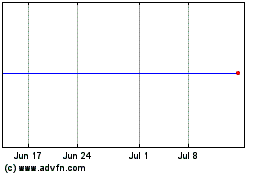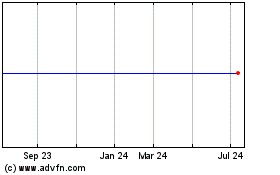First data presentation of CALQUENCE®,
(acalabrutinib), recently approved in the US for patients with
previously-treated mantle cell lymphoma
New data on five compounds in development
across six types of blood cancer
AstraZeneca, along with Acerta Pharma, its hematology research
and development center of excellence, and MedImmune, its global
biologics research and development arm, will highlight significant
progress in blood cancer research at the 59th 2017 American Society
of Hematology (ASH) Annual Meeting & Exhibition in Atlanta.
Presentations will include new data from AstraZeneca’s emerging
hematology portfolio in several cancer types including mantle cell
lymphoma (MCL), chronic lymphocytic leukemia (CLL), hairy cell
leukemia (HCL), acute myeloid leukemia (AML), multiple myeloma and
diffuse large B-cell lymphoma (DLBCL).
Sean Bohen, Executive Vice President, Global Medicines
Development and Chief Medical Officer at AstraZeneca, said:
“Following the recent accelerated approval of AstraZeneca’s first
medicine for a blood cancer, CALQUENCE, we will share a broad range
of new data at ASH highlighting our scientific progress in
hematology as we seek to develop potential medicines that advance
patient care.”
CALQUENCE (acalabrutinib) is a kinase inhibitor indicated for
the treatment of adult patients with mantle cell lymphoma (MCL) who
have received at least one prior therapy. Continued approval for
this indication may be contingent upon verification and description
of clinical benefit in confirmatory trials.
Efficacy and safety of CALQUENCE in treatment of
previously-treated MCL
Following the US Food and Drug Administration (FDA) accelerated
approval of CALQUENCE, data from the pivotal Phase II ACE-LY-004
clinical trial on which the accelerated approval was based, will be
presented for the first time (Abstract #155). New details of the
trial will be shared, including median time to response,
pre-specified patient subgroup efficacy analyses, as well as safety
analyses, further characterizing the clinical profile of CALQUENCE
in this patient population.
Acalabrutinib as monotherapy and in combination in multiple
CLL patient populations
Results will be presented from the Phase Ib/II ACE-CL-003 trial
evaluating acalabrutinib and obinutuzumab in treatment-naïve and
previously-treated CLL patients (Abstract #432), which highlight
data on the safety profile and activity of the combination.
Long-term follow-up safety and efficacy data from the Phase I/II
ACE-CL-001 clinical trial which is testing acalabrutinib as a
monotherapy in a large cohort of patients with relapsed or
refractory CLL (Abstract #498) will expand on findings previously
reported; these data will also highlight the duration of response
in this patient population.
Early-stage hematology portfolio
- AstraZeneca will present additional
data from its haematology portfolio, including findings from a
Phase I trial of moxetumomab pasudotox, an anti-CD22 recombinant
immunotoxin and potential new medicine in development for the
treatment of people with previously-treated HCL (Abstract:
#2765)
- Early data on AZD2811, a novel
nanoparticle inhibitor of aurora kinase B being tested in AML
(Abstract #1368)
- Preclinical data from trials on
MEDI2228, a BCMA-targeting pyrrolobenzodiazepine-linked antibody
drug conjugate being tested in multiple myeloma (Abstract
#3153)
- Data from a trial of vistusertib
(AZD2014), a dual mTORC1/2 inhibitor being tested in DLBCL
(Abstract #4113)
IMPORTANT SAFETY INFORMATION ABOUT CALQUENCE
Hemorrhage
Serious hemorrhagic events, including fatal events, have
occurred in the combined safety database of 612 patients with
hematologic malignancies treated with CALQUENCE monotherapy. Grade
3 or higher bleeding events, including gastrointestinal,
intracranial, and epistaxis, have been reported in 2% of patients.
Overall, bleeding events, including bruising and petechiae of any
grade, occurred in approximately 50% of patients with hematological
malignancies.
The mechanism for the bleeding events is not well
understood.
CALQUENCE may further increase the risk of hemorrhage in
patients receiving antiplatelet or anticoagulant therapies, and
patients should be monitored for signs of bleeding.
Consider the benefit-risk of withholding CALQUENCE for 3 to 7
days pre- and post-surgery, depending upon the type of surgery and
the risk of bleeding.
Infection
Serious infections (bacterial, viral, or fungal), including
fatal events and opportunistic infections, have occurred in the
combined safety database of 612 patients with hematologic
malignancies treated with CALQUENCE monotherapy. Grade 3 or higher
infections occurred in 18% of these patients. The most frequently
reported Grade 3 or 4 infection was pneumonia. Infections due to
hepatitis B virus (HBV) reactivation and progressive multifocal
leukoencephalopathy (PML) have occurred.
Monitor patients for signs and symptoms of infection and treat
as medically appropriate. Consider prophylaxis in patients who are
at increased risk for opportunistic infections.
Cytopenias
In the combined safety database of 612 patients with hematologic
malignancies, patients treated with CALQUENCE monotherapy
experienced Grade 3 or 4 cytopenias, including neutropenia (23%),
anemia (11%), and thrombocytopenia (8%), based on laboratory
measurements. Monitor complete blood counts monthly during
treatment.
Second Primary Malignancies
Second primary malignancies, including non-skin carcinomas, have
occurred in 11% of patients with hematologic malignancies treated
with CALQUENCE monotherapy in the combined safety database of 612
patients. The most frequent second primary malignancy was skin
cancer, reported in 7% of patients. Advise protection from sun
exposure.
Atrial Fibrillation and Flutter
In the combined safety database of 612 patients with hematologic
malignancies treated with CALQUENCE monotherapy, atrial
fibrillation and atrial flutter of any grade occurred in 3% of
patients, and Grade 3 in 1% of patients. Monitor for atrial
fibrillation and atrial flutter and manage as appropriate.
ADVERSE REACTIONS
The most common adverse reactions (≥20%) of any grade were
anemia,* thrombocytopenia,* headache (39%), neutropenia,* diarrhea
(31%), fatigue (28%), myalgia (21%), and bruising (21%).
*Treatment-emergent decreases (all grades) of hemoglobin (46%),
platelets (44%), and neutrophils (36%) were based on laboratory
measurements and adverse reactions.
The most common Grade ≥ 3 non-hematological adverse reaction
(reported in at least 2% of patients) was diarrhea (3.2%).
Dosage reductions or discontinuations due to any adverse
reaction were reported in 1.6% and 6.5% of patients,
respectively.
Increases in creatinine 1.5 to 3 times the upper limit of normal
occurred in 4.8% of patients.
DRUG INTERACTIONS
Strong CYP3A Inhibitors: Avoid co-administration
with a strong CYP3A inhibitor. If a strong CYP3A inhibitor will be
used short-term, interrupt CALQUENCE.
Moderate CYP3A Inhibitors: When CALQUENCE is
co-administered with a moderate CYP3A inhibitor, reduce CALQUENCE
dose to 100 mg once daily.
Strong CYP3A Inducers: Avoid co-administration with
a strong CYP3A inducer. If a strong CYP3A inducer cannot be
avoided, increase the CALQUENCE dose to 200 mg twice daily.
Gastric Acid Reducing Agents: If treatment with a
gastric acid reducing agent is required, consider using an
H2-receptor antagonist or an antacid. Take CALQUENCE 2 hours before
taking an H2-receptor antagonist. Separate dosing with an antacid
by at least 2 hours.
Avoid co-administration with proton pump inhibitors. Due to the
long-lasting effect of proton pump inhibitors, separation of doses
may not eliminate the interaction with CALQUENCE.
SPECIFIC POPULATIONS
There is insufficient clinical data on CALQUENCE use in pregnant
women to inform a drug-associated risk for major birth defects and
miscarriage. Advise women of the potential risk to a fetus.
It is not known if CALQUENCE is present in human milk. Advise
lactating women not to breastfeed while taking CALQUENCE and for at
least 2 weeks after the final dose.
Please see complete Prescribing
Information including Patient Information.
NOTES TO EDITORS
A full list of company-sponsored abstracts to be presented at
ASH are as follows:
Abstract Number Title
Presentation Details Abstract #155
Efficacy and safety of acalabrutinib monotherapy in patients with
relapsed/refractory mantle cell lymphoma in the Phase II ACE-LY-004
Study Oral session, Saturday, December 9, 1 p.m. EST
Location: Georgia World Congress Center,
Building A, Level 4, A411-A412
Abstract #1741 Pharmacodynamic evaluation of
acalabrutinib in relapsed/refractory and treatment-naive patients
with chronic lymphocytic leukemia in the Phase I/II ACE-CL-001
study Poster sessions, Saturday, December 9,
5:30-7:30 p.m. EST
Location: Georgia World Congress Center,
Building A, Level 1, Hall A2
Abstract: #1268 Exposure-response of the Bruton
tyrosine kinase inhibitor, acalabrutinib in the treatment of
hematologic malignancies Abstract #1243
Concurrent treatment with Pim kinase
inhibitor downregulates alternative non-homologous end-joining
repair and decreases genomic instability in FLT3-ITD cells treated
with topoisomerase 2 inhibitors
Abstract #1368 Preclinical and early Phase I clinical
data of AZD2811 nanoparticle in AML, an aurora B kinase inhibitor
Abstract #432 Acalabrutinib with
obinutuzumab in relapsed/refractory and treatment-naive patients
with chronic lymphocytic leukemia: The phase Ib/II ACE-CL-003 study
Oral session, Sunday, December 10, 1:15 p.m. EST
Location: Georgia World Congress Center,
Building B, Level 5, Murphy BR 3-4
Abstract #498 Acalabrutinib monotherapy in patients
with relapsed/refractory chronic lymphocytic leukemia: Updated
results from the Phase I/II ACE-CL-001 study Oral
session, Sunday, December 10, 5:45 p.m. EST
Location: Georgia World Congress Center,
Building B, Level 5, Murphy BR 3-4
Abstract: #2765 Negative minimal residual disease
associated with extended response to moxetumomab pasudotox in
patients with relapsed/refractory hairy cell leukemia: long-term
follow-up of bone marrow immunohistochemistry analyses from a Phase
1 study Poster Session, Sunday, December 10, 6-8 p.m. EST
Location: Georgia World Congress Center,
Building A, Level 1, Hall A2
Abstract: #3153 Preclinical evaluation of MEDI2228, a
BCMA-targeting pyrrolobenzodiazepine-linked antibody drug conjugate
for the treatment of multiple myeloma Abstract #3442
Adverse events, resource use, and economic burden in patients with
mantle cell lymphoma in the United States Abstract
#4326 Pooled analysis of safety data from clinical
trials evaluating acalabrutinib monotherapy in hematologic
malignancies Poster sessions, Monday, December 11, 6-8 p.m. EST
Location: Georgia World Congress Center,
Building A, Level 1, Hall A2
Abstract #4060 Understanding ibrutinib treatment
discontinuation patterns for chronic lymphocytic leukemia Abstract
#4684 MCL treatment patterns and outcomes: A
community oncology practice experience Abstract #4113
Combined inhibition of mTOR and BTK signaling is required for
optimal long-term growth inhibition in DLBCL models
About AstraZeneca in Oncology
AstraZeneca has a deep-rooted heritage in Oncology and offers a
quickly growing portfolio of new medicines that have the potential
to transform patients’ lives and the Company’s future. With at
least six new medicines to be launched between 2014 and 2020 and a
broad pipeline of small molecules and biologics in development, we
are committed to advance New Oncology as one of AstraZeneca’s five
Growth Platforms focused on lung, ovarian, breast and blood
cancers. In addition to our core capabilities, we actively pursue
innovative partnerships and investments that accelerate the
delivery of our strategy as illustrated by our investment in Acerta
Pharma in hematology.
By harnessing the power of four scientific platforms –
Immuno-Oncology, Tumor Drivers and Resistance, DNA Damage Response
and Antibody Drug Conjugates – and by championing the development
of personalized combinations, AstraZeneca has the vision to
redefine cancer treatment and one day eliminate cancer as a cause
of death.
About Acerta Pharma
Acerta Pharma, a member of the AstraZeneca Group, is creating
novel therapies intended for the treatment of cancer and autoimmune
diseases. AstraZeneca acquired a majority stake interest in Acerta
Pharma, which serves as AstraZeneca’s hematology research and
development center of excellence. For more information, please
visit www.acerta-pharma.com.
About MedImmune
MedImmune is the global biologics research and development arm
of AstraZeneca, a global, innovation-driven biopharmaceutical
business that focuses on the discovery, development and
commercialization of small molecule and biologic prescription
medicines. MedImmune is pioneering innovative research and
exploring novel pathways across Oncology; Respiratory,
Cardiovascular & Metabolic Diseases; and Infection and
Vaccines. The MedImmune headquarters is located in Gaithersburg,
Md., one of AstraZeneca’s three global R&D centres, with
additional sites in Cambridge, UK, and Mountain View, CA. For more
information, please visit www.medimmune.com.
About AstraZeneca
AstraZeneca is a global, science-led biopharmaceutical company
that focuses on the discovery, development and commercialization of
prescription medicines, primarily for the treatment of diseases in
three main therapy areas – Oncology, Cardiovascular & Metabolic
Diseases and Respiratory. The Company also is selectively active in
the areas of autoimmunity, neuroscience and infection. AstraZeneca
operates in over 100 countries and its innovative medicines are
used by millions of patients worldwide. For more information,
please visit www.astrazeneca-us.com and follow us on Twitter
@AstraZenecaUS.
US-16351 Last Updated 12/17
View source
version on businesswire.com: http://www.businesswire.com/news/home/20171206005247/en/
AstraZenecaMichele Meixell, +1 302-885-2677Stephanie Wiswall, +1
302-885-2677
AstraZeneca (NYSE:AZN)
Historical Stock Chart
From Mar 2024 to Apr 2024

AstraZeneca (NYSE:AZN)
Historical Stock Chart
From Apr 2023 to Apr 2024
